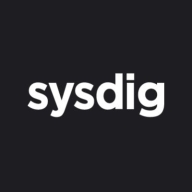

Find out in this report how the two Cloud Security Posture Management (CSPM) solutions compare in terms of features, pricing, service and support, easy of deployment, and ROI.

Fugue is an infrastructure-level cloud operating system. It builds, operates, and terminates cloud infrastructure and services and automates the continuous enforcement of declared infrastructure configurations. Fugue completes the DevOps workflow by automating cloud lifecycle management via enforced and versionable infrastructure as code. Fugue is a single source of truth and trust for the cloud.
In the cloud, every second counts. Attacks move at warp speed, and security teams must protect the business without slowing it down. Sysdig stops cloud attacks in real time, instantly detecting changes in risk with runtime insights, a unique AI architecture, and open source Falco. Sysdig delivers live visibility by correlating signals across cloud workloads, identities, and services to uncover hidden attack paths. By knowing what is running, teams can prioritize the vulnerabilities, misconfigurations, permissions, and threats that matter most. From prevention to defense, Sysdig helps enterprises move faster and focus on what matters: innovation.
Sysdig. Secure Every Second.
We monitor all Cloud Security Posture Management (CSPM) reviews to prevent fraudulent reviews and keep review quality high. We do not post reviews by company employees or direct competitors. We validate each review for authenticity via cross-reference with LinkedIn, and personal follow-up with the reviewer when necessary.